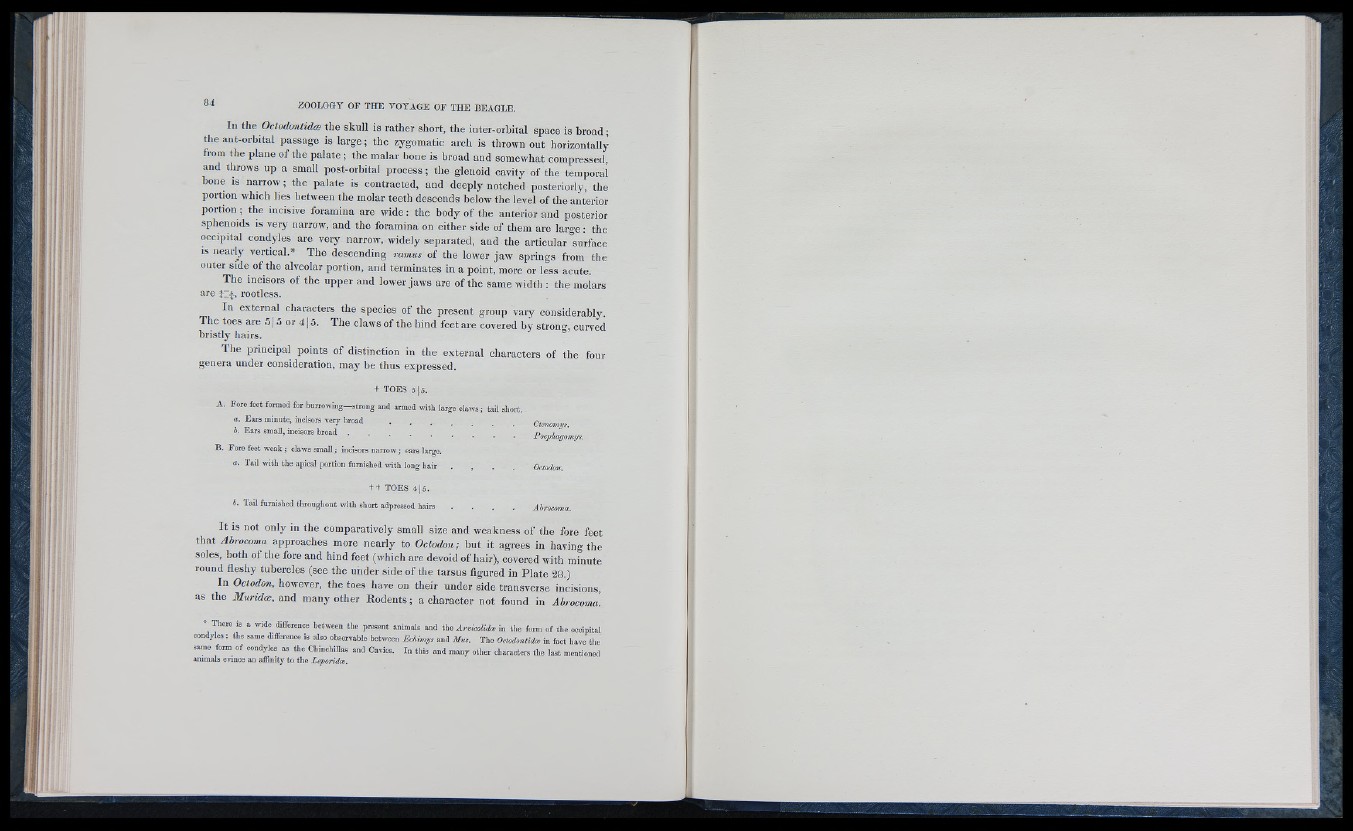
In Üie Octodontidoe the skull is rather short, the inter-orbital space is broad;
the ant-orbital passage is large ; the zygomatic arch is thrown out horizontall)
from the plane of the palate ; the malar bone is broad and somewhat compressed,
and throws up a small post-orbital process ; the glenoid cavity of the temporal
bone IS narrow ; the palate is contracted, and deeply notched posteriorly, the
portion which lies between tlie molar teeth descends below the level of the anterior
portion ; the incisive foramina are wide : the body of the anterior and posterior
sphenoids is very narrow, and the foramina on either side of them are large : the
occipital condyles are very narrow, widely separated, and the articular surface
IS nearly vertical.* The descending ramus of the lower jaw springs from the
outer side of the alveolar portion, and terminates in a point, more or less acute.
The incisors of the upper and lower jaws are of the same width : the molars are 414, rootless.
Ill external characters the species of the present group vary considerably.
The toes are 5 15 or 4 ] 5. The claws of the hind feet are covered by strong, curved bristly hairs.
The principal points of distinction in the external characters of the four
genera under consideration, may be thus expressed.
t TO ES 5 15.
A . Fore teot formed for biirroiTmg— strong and armed ivttlr large claws ; tall short.
a. Ears minute, incisors very broad
h. Ears small, incisors broad
B. Fore feet weak ; claws sm all; incisors narrow ; ears large.
a. Tail with the apical portion furnished w ith long hair
t f TO ES 4 |5 .
b. TaU furnished throughont w ith short adpressed hairs
Poephagomys.
Octodon.
It IS not only in the comparatively small size and weakness of the fore feet
that Abrocoma approaches more nearly to Octodon; but it agrees in having the
soles, both of the fore and hind feet (which are devoid of hair), covered with mhiute
round fleshy tubercles (see the under side of the tarsus figured in Plate 28.)
In Octodon, however, the toes have on their under side transverse incisions
as the Muridoe, w A many other Rodents; a character not found in Abrocoma.
• There is a, wide difference between the present animals and tho Arm coliioe in the form of the occipital
condyles ; the same différence is also observable between B ddm ys and M ui. Tho Oclodzntidæ in fact l.avc tho
same form of condyles as the Chincliillas and Cavies. In this and m any other characters the last mentioned
animals evince an affinity to the Leporidæ.